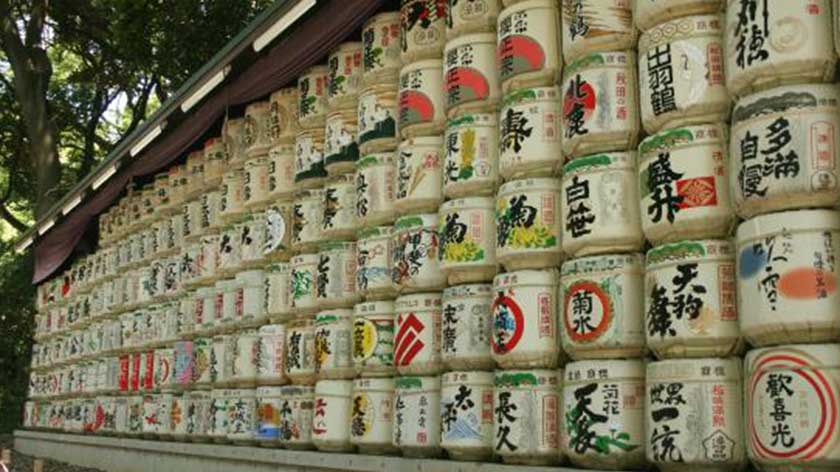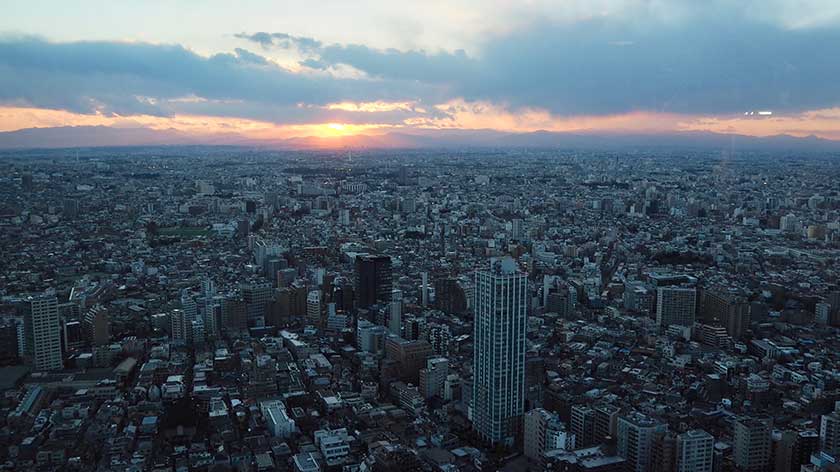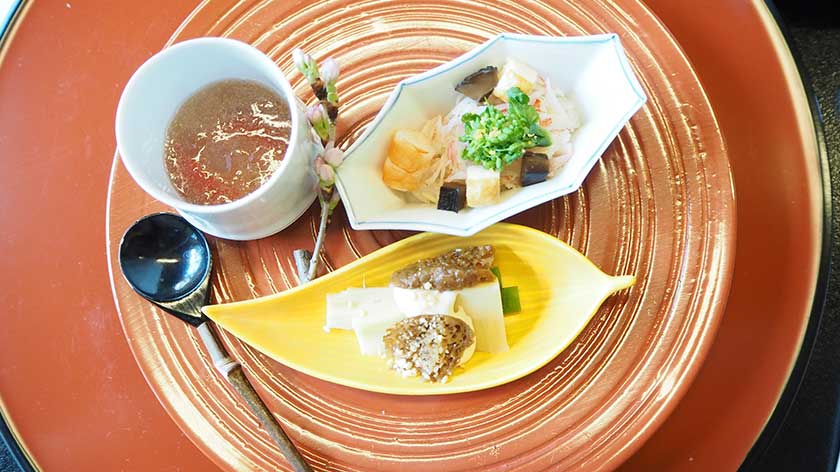By Andy Barrow
I have a confession to make. My two-part blog may have grown somewhat… Sorry! (Read part one here!)
Basically, I felt that summing up my thoughts on access in Tokyo and how the city will cope with hosting two world events back to back in 2019 and 2020, was a little too important to be just a footnote. Therefore, I decided to concentrate on places to see and getting around in this part, then devote an entire post to that summary at a later date.
So, moving on swiftly, here are a few of the places that we managed to see during our time in the city last year…
Half a day in the centre of Tokyo
Shibuya is the epicenter of Tokyo and a must see area for anyone visiting the city for the first time.
Scramble Crossing and Hachiko Gate: Scramble Crossing is iconic, having appeared in scores of films, documentaries and music videos over the years. As well as joining the melee at ground level, you can also watch the madness from the nearby Starbucks.
While you’re at the crossing, make sure you visit the statue of the dog, “Hachiko”. The emotional story connected with this most famous of Akitas is held up in Japanese culture as an example of loyalty and fidelity.
Cat Street: This is a quirky little road connecting Shibuya and Harayuku. It has lots of vintage shops and a couple of good spots for coffee. You’ll have to take pot luck with the access as some places have steps into them, but overall, Cat Street is worth a look, even just for the people watching!
Meiji Jingu Shrine: This is a great place to visit if you want to see a bit of culture while taking a break from the hustle and bustle of the city. There are plenty of beautiful sights to see within the complex (we loved the highly decorative Sake and wine barrels on the path towards the shrine), with a great story behind them. Although it’s in the middle of a forest, the route was fairly flat and general access seemed fine to me.

Tip – The four places I’ve mentioned below are all fairly close to each other. If you follow them in the order that they’re listed, I’d say you could comfortable see them all in half a day at most.
Taking in the view
Every big city is worth see from an elevated position, but Tokyo’s landmark building may not be as well known as elsewhere in the world. Here are my tips for the perfect holiday snap.
Tokyo Metropolitan Government Building: This is a great place to view the Tokyo skyline. (As you can see from my stunning sunset photo!) It’s a fairly standard set-up with an observation deck and café/gift shop on the top floor. The whole building is fully accessible and also free of charge! Aim to get to the top about an hour before sunset to see those fiery colours. You can also see Mt. Fuji in the distance on a clear day.

Peak Bar, Park Hyatt: If you’d like to admire the Tokyo skyline in a bit more style, the “Twilight Time” offer at the Park Hyatt is a great way to start your evening. You pay an all-in set rate for drinks/canapés between 5pm and 8pm. Again, as this is a big-brand hotel, the access is excellent.
Feeding and Watering
As far as eating and drinking goes, Tokyo is amazing. As with any major city, there is a wealth of options available to you. I’m not going to list all the places we went to, but here are a few of my “must do’ things…
Tokyo Shiba Tofuya Ukai: I’ve only picked one specific place to mention here because it’s just so different. This famous Tofu restaurant is located in the shadow of the Tokyo Tower and features a secret Japanese garden and Koi carp pond. Normally, I don’t have much love for Tofu, but the tasting menu here elevates it to a whole new level. The décor here is nothing short of opulent and we ate our lunch in a gorgeous private room overlooking the gardens.

It’s not cheap and there is the odd step around the place, but the staff here are extremely accommodating so if you’re happy to compromise a bit, give it a go – I promise it’s worth it!
Go for Sushi. Often. Anywhere: I have bad news; Japan has ruined Sushi. Once you have it here, it just isn’t the same anywhere else. We visited a variety of places from compact “standing bars” (I know!), to more formal restaurants, and always had great experiences. You’ll find the best deals at lunchtime and access varies from place to place, but as ever, everyone is extremely helpful.
Slurp some Ramen: Having a warming bowl of Ramen is a must in Tokyo, especially in the winter months. I love the spicy options, but try the classic style too, and slurping is mandatory!
Tip – If you struggle using chopsticks through poor hand dexterity; consider bringing your own cutlery with you to restaurants as adult sets aren’t always available. Luckily, staff have always managed to find something for me, but I have had to eat with some absolutely cracking kids’ forks! Eating sushi with your hands is generally acceptable.
Visit an “Izakaya”: For drinks and maybe some Gyoza (pan-fried dumplings) as a snack, visit one of the thousands of Izakayas in Tokyo. These are the Japanese equivalent of pubs and are very laid-back places where people meet after work to socialise. The atmosphere is lively and you’ll always get an enthusiastic greeting from the staff.
Try Sake: You can’t go to Japan and not have Sake. There are hundreds of varieties of this traditional rice wine so my advice is to ask what is good at an Izakaya or visit a Sake bar. We spent an evening at “Kurand Sake Market” in Shibuya and had a great time.
Tip – As well as Sake, Japan makes some of the world’s best Whisky!
Getting to it all
Although most of my exploration in Tokyo was under my own steam, I did make use of the metro a couple of times. As a Londoner, my expectations of tube travel aren’t too high. The London underground is a very old system and despite recent renovations, there a many areas of the network that are unlikely to ever be fully accessible to wheelchair users.
By contrast, the Tokyo Metro is very modern and its level of accessibility reflects this. Most stations have a completely accessible path of travel from street to ticket hall and platform. Buying tickets is a simple process too, with lowered machines readily available.
Many stations also have minimal threshold between the platform and the train. Because I had a companion with me and I use a manual wheelchair, if there was a step, a quick bump up was all I needed to be on my way. However, for those travelling solo and/or using power chairs, a staff member with a portable ramp is on hand to help. Once on the train, the carriages are quite large and there is plenty of space for your wheelchair. (I have to admit that I didn’t travel during the busy periods so can’t say what it’s like if you’re battling the crowds.)
The one thing that we struggled with was finding our way in and back out of stations. Language barriers aren’t exclusive to people with disabilities, but this coupled with fewer options in terms of access routes meant that we had a few lengthy searches for entrances and exits. If you’ve ever been in a similar situation, you’ll know that the accessible route isn’t always immediately obvious.
Tip – If you’re unsure of the best route to take in the Metro, be less British than me and save time by asking someone in the know straight away. There’s also a great App for your phone here: https://www.tokyometro.jp/en/tips/app/index.html
In Conclusion
Ok, I’m done for this post but please check back soon to read the final installment in this series, where I’ll be giving my overall opinion of access in Tokyo and how the city will handle the huge influx of disabled visitors during the forthcoming Rugby World Cup and Olympic/Paralympic Games.
Read Part Three!
Andy Barrow is an international speaker, Triple Paralympian, and 3 time European Gold Medalist for Wheelchair Rugby. Since retiring as an athlete, Andy has worked as an athlete mentor for the Dame Kelly Holmes Trust and Sporting Champions as well as creating or collaborating on several mentoring projects including his hugely successful 3 Cs Challenge. Andy now regularly speaks to corporate audiences about performance and has recently taken his projects international, where he specializes in creating bespoke itineraries for schools and organisations.
Read more about Andy’s work on his website – http://andybarrow.co.uk/ – and follow him on Twitter @AndyBarrow2012!
0 Comments